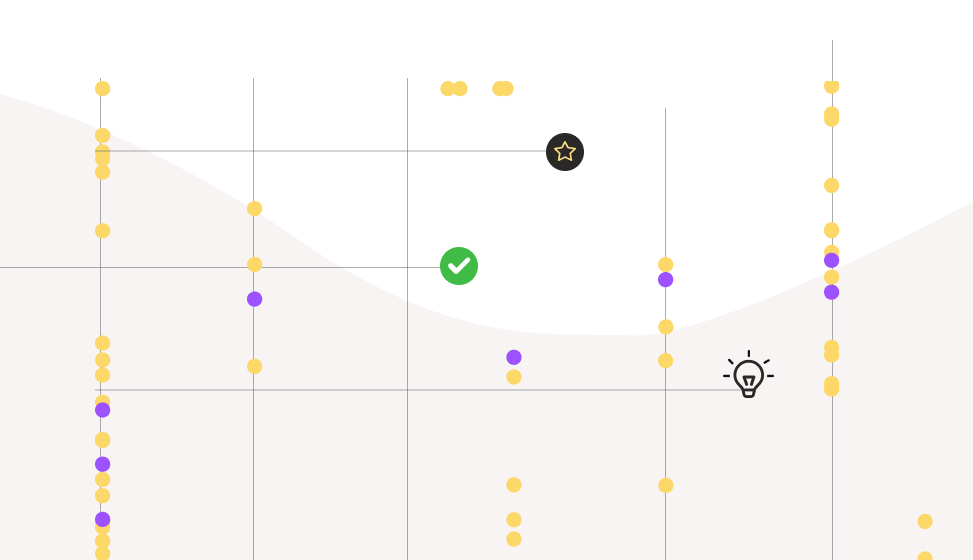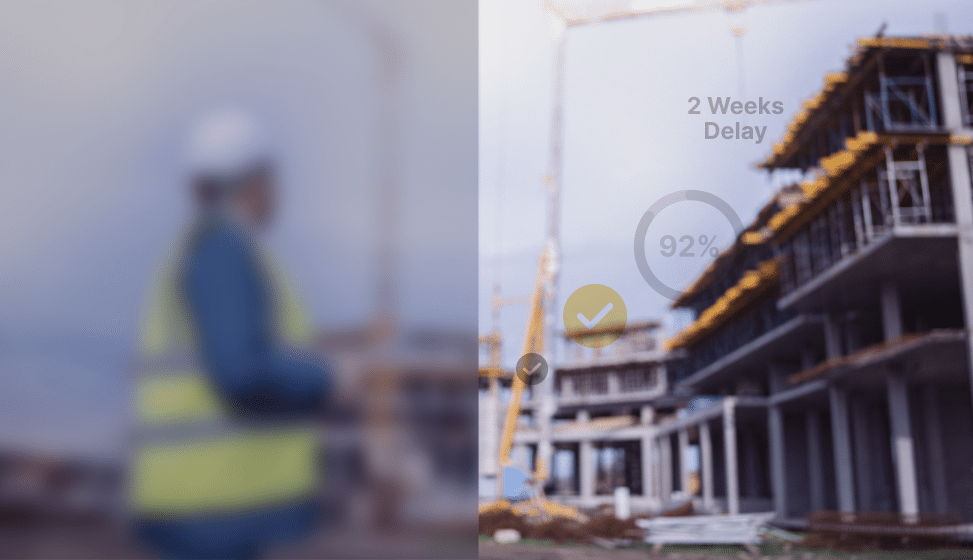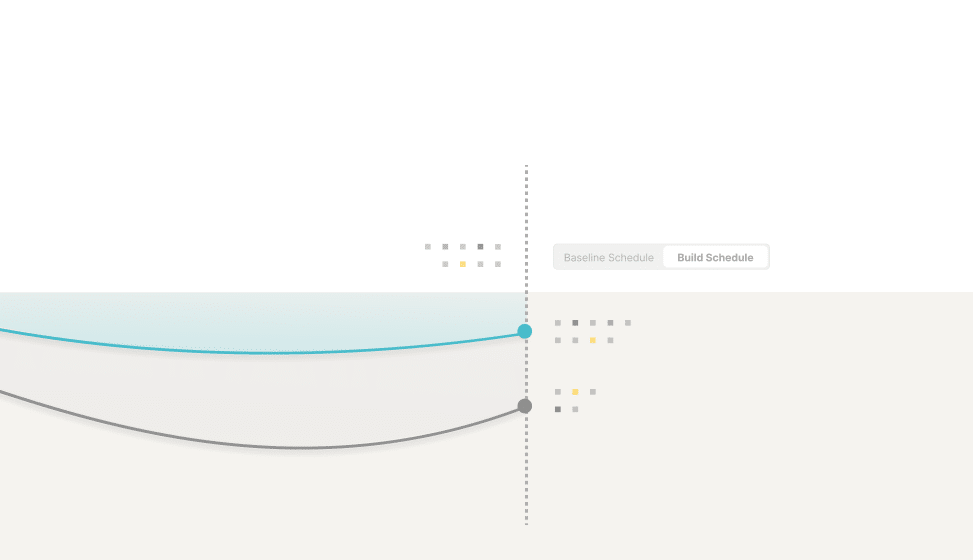Construction Management How can AI progress management improve UK healthcare infrastructure delivery?
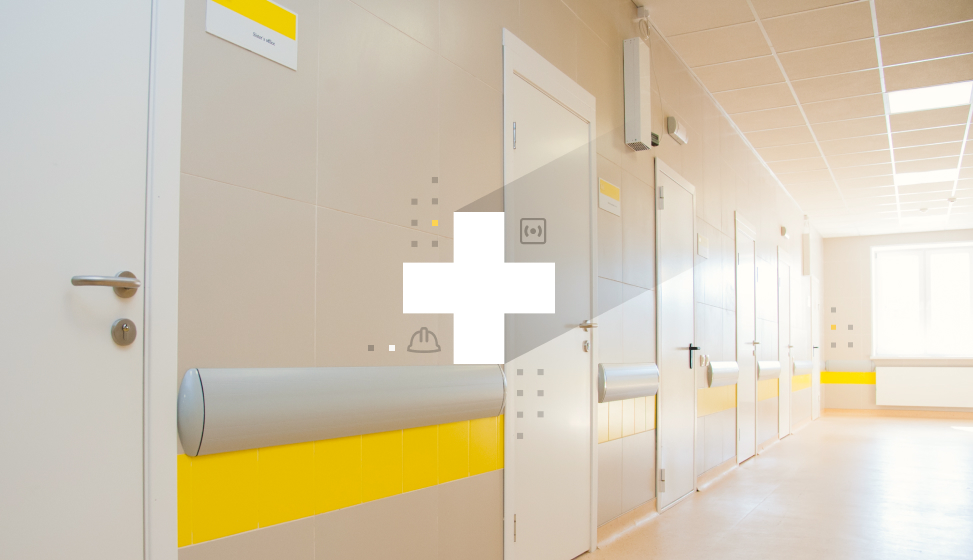
The quotes in this article are taken from a panel at Digital Construction Week 2024, during which Buildots was joined onstage by Stephen Killen, David Hollywood, and Bruce Peston. We thank all our panelists for their contributions.
All large-scale construction projects are complex. But healthcare infrastructure projects are, arguably, the most difficult to deliver on time and budget. These projects must contend with rigorous NHS standards, stringent financial constraints, complex webs of stakeholders, and maintaining operational continuity (since many projects involve refurbishing or expanding existing facilities or sites). And that's before we even consider the usual supply chain challenges and talent shortages that affect the construction sector!
Yet efficient healthcare project delivery is more crucial than ever if the service is to meet growing demand and enhance patient care. In response, some project delivery teams are rising to this challenge by embracing new technologies like AI progress management.
Improved collaboration and communication
Healthcare projects have some of the most complex fit-outs in construction. With hundreds of thousands of elements to track and multiple trades working side-by-side, miscommunications are commonplace.
This is where AI progress management platforms make a massive difference in improving collaboration. With Buildots, teams can capture every last element on a site using a 360° camera. The result is accurate, unbiased data presented in actionable metrics. Giving trades and project managers the ability to see how their work impacts others leads to more coordinated operations. However, the benefits of AI also extend to how main contractors communicate with their clients – in this case, NHS trusts.
Here’s how Stephen Killen, Transformation Director at University Hospitals Dorset, sees it. Stephen is responsible for around half a billion worth of projects, and his team is using Buildots to deliver a new £200m, 24,000 sqm (258,300 sqft) birth, emergency, critical care, and children’s health (BEACH) unit at the Royal Bournemouth Hospital. He says, “As a client, the main contractor and I work side by side on everything. Our client project manager often sits with their team, and we work from the same resource collaboratively.”
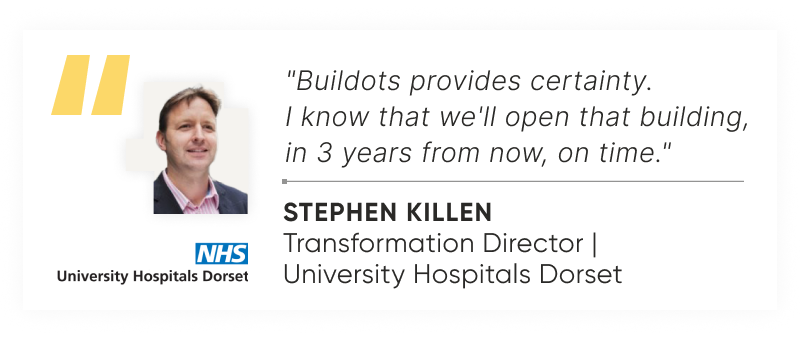
Stephen also notes that the ‘magic’ of AI extends to his communications with clinical and facilities teams working at the University Hospitals Dorset NHS Foundation Trust. He adds: “Not everyone can read 2D plans. But with the 3D model, they can visualize the space and how it’ll look.”
Embracing proactivity, not firefighting
Improving communication is one thing, but the real proof of AI progress management’s utility lies in its ability to guarantee that projects are delivered on time and within budget. This is sorely needed in healthcare infrastructure project delivery, says David Hollywood, Operations Director at Kier, “AI unlocks an opportunity to do more with less. We simply can’t meet the goals of any hospital building program over the next few years with existing levels of staff and the current state of the supply chain. For me, AI can take on some of the heavy lifting.”
With an AI progress management platform, teams can spot delays early before they escalate. Consider the example of the Royal Bournemouth Hospital project. IHP – the project’s main contractor and an integrated joint venture between VINCI Building and Sir Robert McAlpine – needed to adhere to its planned schedule and mitigate potential delays. It turned to Buildots to precisely track the pace of each subcontractor so that it could predict who might be falling behind and find ways to boost their performance. Looking at the data week over week, IHP found that without intervention, the HVAC and plumbing production pace would extend the projected schedule substantially. Armed with this information, IHP put measures in place to mitigate delays and reduce their impact on the project’s critical timeline.
David Hollywood’s Kier team is working on a new acute block at Luton & Dunstable Hospital, a project that has embraced AI progress management. He explains the benefits: “This is a hundred million pound project, and there are hundreds of thousands of components. Traditional behavior is to have an expert planner – a scarce resource at the best of times – walking around the job every two weeks with his pad out. He comes back and goes, ‘We’ve got a new problem.’ By that point, it’s too late to make a change without incurring significant costs and delays. But that’s not the case with AI…Buildots provides a constant stream of live data. This helps us react quicker, so I don’t have to work out how we’re going to work Saturdays and Sundays to resolve problems. That planner’s time can also be better spent doing other things.”
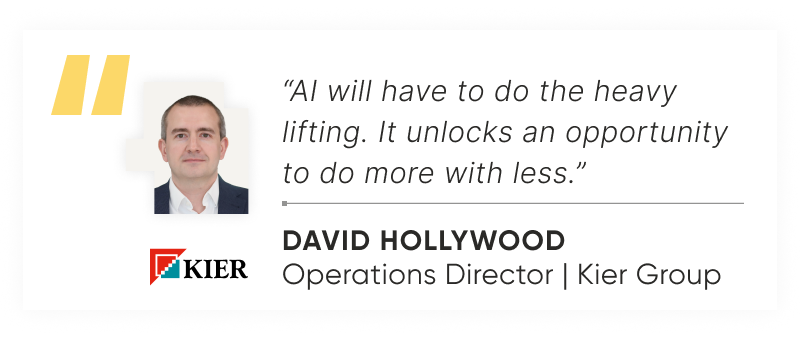
And what about a client’s perspective? “Working with a methodology and solution like Buildots provides certainty,” emphasized Stephen Killen. “I know we’ll open our building in three years from now, on time. It gives me confidence and clarity to forewarn our clients so that they can start preparing patient letters, processing new admissions, or alerting staff and patients that they will have to move to a new location.”
Continuous learning within and between projects
Buildots creates a constant stream of data that the platform transforms into actionable insights. This enables project teams to adopt a performance-driven mindset, measuring critical performance indicators like area utilization, pace, or percent plan complete (PPC). Over time, data gathered according to these metrics creates a dynamic feedback loop, so teams can continuously measure, analyze and implement targeted risk mitigation plans to stay on track.
But it’s not just about optimizing individual projects. On large initiatives, such as multi-hospital builds, main contractors can share lessons between projects to amend future designs and programs and feed them back into pre-construction activities. David Hollywood sees a clear need for this, “We tend to have the first lessons learned meeting the day after a project finishes. We’re all sitting there mopping sweat from our brows, having worked very long hours. But it shouldn’t be like that, particularly in an environment where there’s potentially a framework on the horizon. During a project, I should be able to sit in a framework meeting with everyone and say, ‘We’re experiencing this problem, and we need to do something about it.’ We could decide on a solution there and then. We could deploy it minutes later, and days later, we’d start seeing the outcome.”
Lifecycle management
Embracing AI progress management on complex healthcare construction projects allows teams to maintain a precise and up-to-date 3D model that accurately represents the building. That’s because deviations detected by the AI can prompt necessary revisions in the 3D model that might otherwise go unnoticed. Not only are these accurate models useful during the construction process, but it’s becoming more common for teams to continue using them after construction is completed, such as for maintenance purposes.
IHP has implemented Buildots’ AI to deliver the new BEACH unit at the Royal Bournemouth Hospital. Bruce Preston is the Project Director, “It’s been established that if you work in BIM collaboratively, it enhances the certainty of the outcome. That’s been known for a while. What we’re now doing is layering more on top, so it can act as an enabler for many other things…Enforcing really good modeling from a project’s outset helps you reap rewards closer to the end when it’s handed over to the building’s end-users. And in effect, AI progress tracking software helps test and verify the accuracy of that model in the first place!”
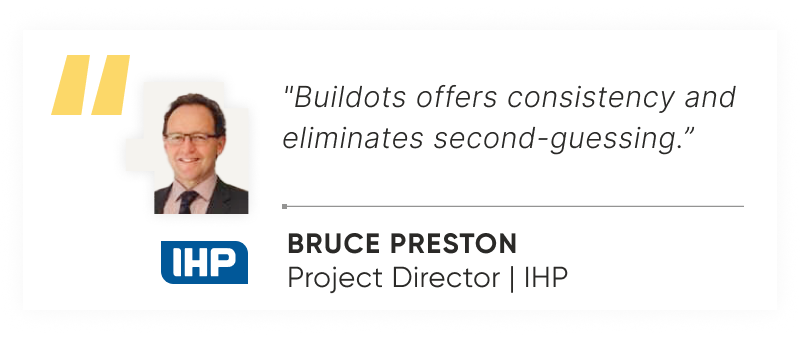
Stephen Killen agrees, adding, “Having a digital twin and standard model opens up many potential future opportunities. Could you use it for wayfinding on a site? Is there an opportunity for our estates team to use it in a standardized way for estates and facilities?”
Wrapping up: The future of healthcare projects with AI
Ultimately, by embracing AI platforms like Buildots, clients and project teams can improve communication, efficiency, and outcomes. As Stephen Killen aptly puts it, “When we start a project, we always consider the patient journey and ask ourselves how we can improve the patient pathway. We then think about how we can use the technology available to do this. For me, there are three key ways technology can help – speed, efficiency and certainty of delivery.”
David Hollywood takes this further, noting that AI is a must-have, not a ‘nice to have’ when addressing critical challenges such as budget constraints and resource limitations, “I see technology as an opportunity. Given the challenges we face – financial, speed, market capacity – if we don’t take every opportunity to be more efficient, then we’ve failed.”
Want to learn more about how hospital construction projects are using Buildots to help them deliver on time and budget? Check out this IHP case study.
